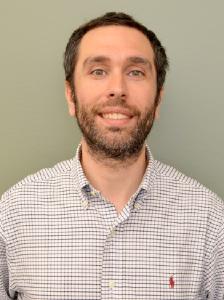Donatello Materassi
December 4, 2014

Bio
Donatello Materassi holds a Laurea in “Ingegneria informatica” and a “Dottorato di Ricerca” in Electrical Engineering/Nonlinear Dynamics and Complex Systems from Universita’ degli Studi di Firenze, Italy. he has been a research associate at the University of Minnesota (Twin Cities) till 2011, is a post-doctoral researcher at Laboratory for Information and Decision Systems (LIDS) at the Massachusetts Institute of Technology and a lecturer at Harvard University till 2014. That same year, he became a an assistant professor at University of Tennessee in Knoxville. His main research interests are graphical models, stochastic systems and cybernetics.
Abstract
The interest for networks and dynamical systems has been increasing in the past years, especially because of their capability of modeling and describing a large variety of phenomena and behaviors. The principal advantages provided by a networked system are a modular approach to design, the possibility of directly introducing redundancy and the realization of distributed and parallel algorithms. All these advantages have led to consider networked systems in the realization of many technological devices. At the same time, it is not surprising that natural and biological systems tend to exhibit strong modularity as well. Interconnected systems are successfully exploited to perform novel modeling approaches in many fields such as Economics, Biology, Cognitive Sciences, Ecology and Geology. While networks of dynamical systems have been deeply studied and analyzed in Physics and Engineering, there is a reduced number of results addressing the problem of reconstructing an unknown dynamical network, since it poses formidable theoretical and practical challenges.
One of the main challenges is definitely the identification of networked systems that can be extremely difficult to access or manipulate. This the necessity of general tools for the identification of networks that are known only via passive observation is rapidly emerging. The talk addressed this problem under several scenarios, trying to form a picture as general and complete as possible. A variety of techniques based on Wiener Filtering for the reconstruction of different classes of networks were introduced. Sufficient and necessary conditions for the correct detection of links were provided as well.